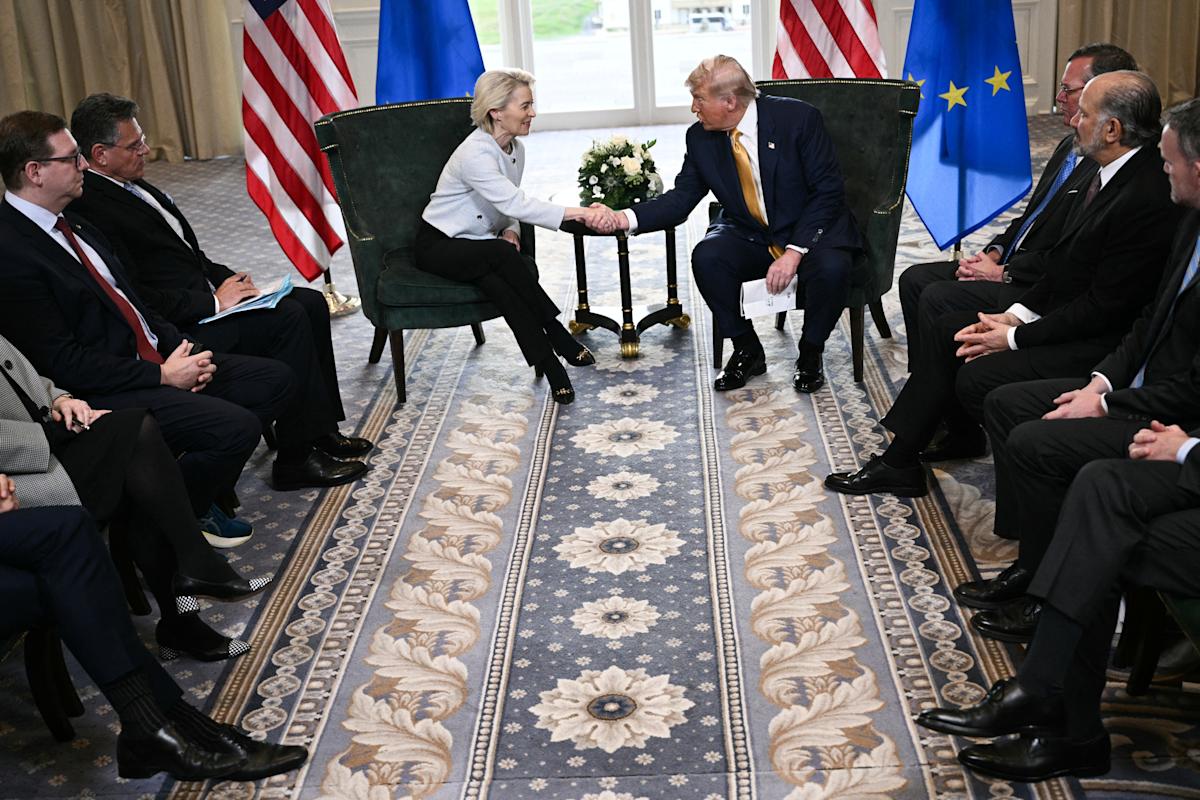Why markets don’t seem to care about the fuzzy details of Trump’s trade deals
President Trump’s recent trade framework announcements have included sketchy initial details that can take days to fill in and sometimes are even contradicted by those on the other side of the table.
Yet markets don’t seem to mind this emerging pattern. In fact, the signal investors are apparently taking from these pacts from Europe to Japan to Vietnam is one of increased stability down the road.
Even vague details are perhaps better than the ups and downs of negotiations — or the worse outcomes that had previously been on the table.
As Mark Malek, Siebert Financial CIO, put it recently on Yahoo Finance, what is known about these complex deals to investors “basically fit into an index card [and] they are basically leaving it all to us to figure out.”
But Malek added that markets have remained stable because of the overall signal that worst case scenarios are being avoided “so I think for the most part we’re happy.”
Whether that happiness continues remains to be seen with plenty of moving trade pieces still on offer.
Negotiations continue with Europe as trade watchers await a formal joint statement on the deal and negotiators still apparently at work to lock in legally binding text.
Other major talks — like those with India — remain outstanding and talks with China continue Tuesday in Sweden amid continuing expectation-setting from both sides that another 90-day pause is in the offing.
The economic effects of the deals are also starting to come into focus based on what details are available.
The latest analysis from the Budget Lab at Yale found that consumers are set to face an overall average effective tariff rate of 18.2% — the highest since 1934 — if all the tariffs announced through Monday go forward.
Despite that over 90 year high, markets have continued to be relatively sanguine.
Another way to explain the market’s relatively subdued response was put forth by Tobin Marcus of Wolfe Research. He outlined in a recent note that what is known may be sketchy but it’s “a bullish outcome v. the range of possibilities, especially the reduction of sectoral tariffs to 15%” — adding that this emerging 15% standard is “better-than-feared.”
He added that markets also appear to have shifted and instead of a previous hope for a dynamic of “escalate to deescalate” — that is to a say a tense standoff followed by a deal to lower rates — the dynamic now apparently being priced in is one he termed an “escalate-to-escalate-less.”
And the fuzziness of the details is a pattern that has been repeated and appears likely to continue.


